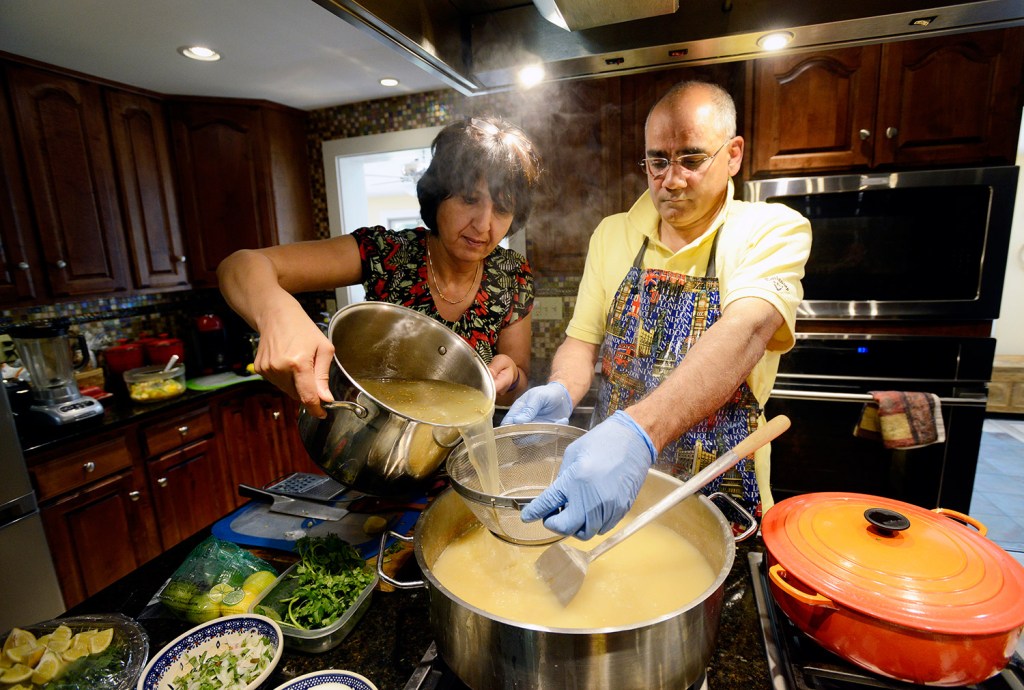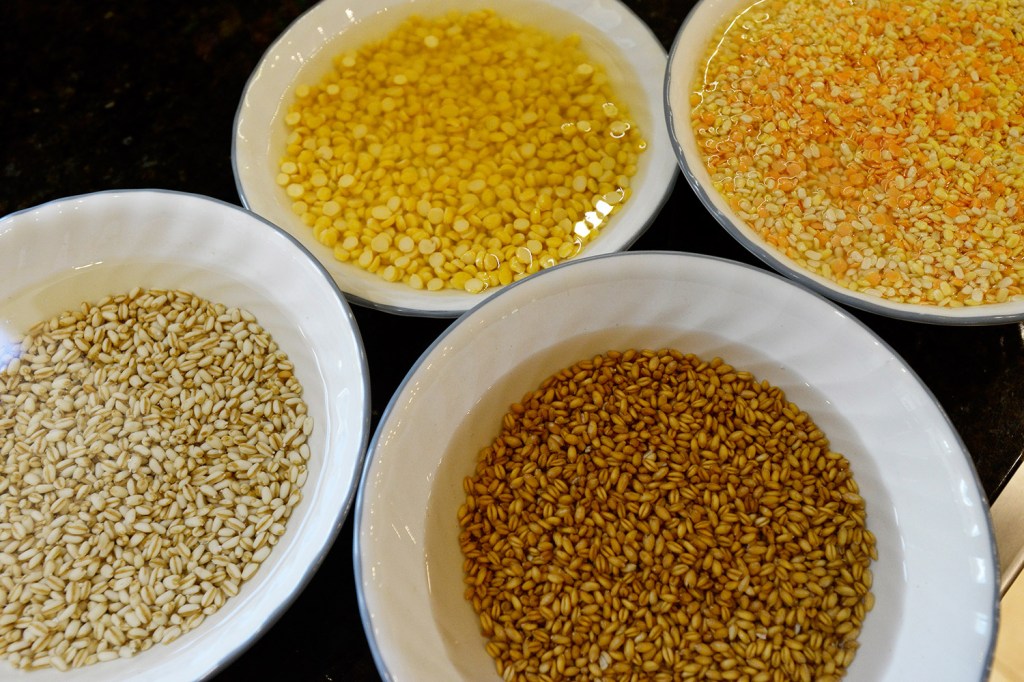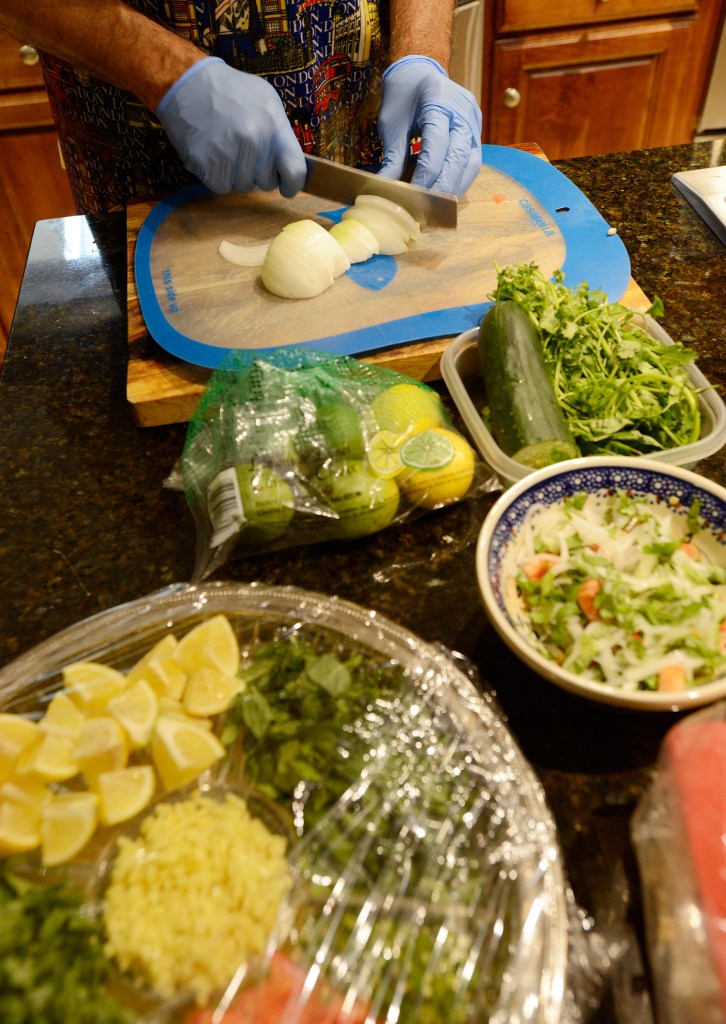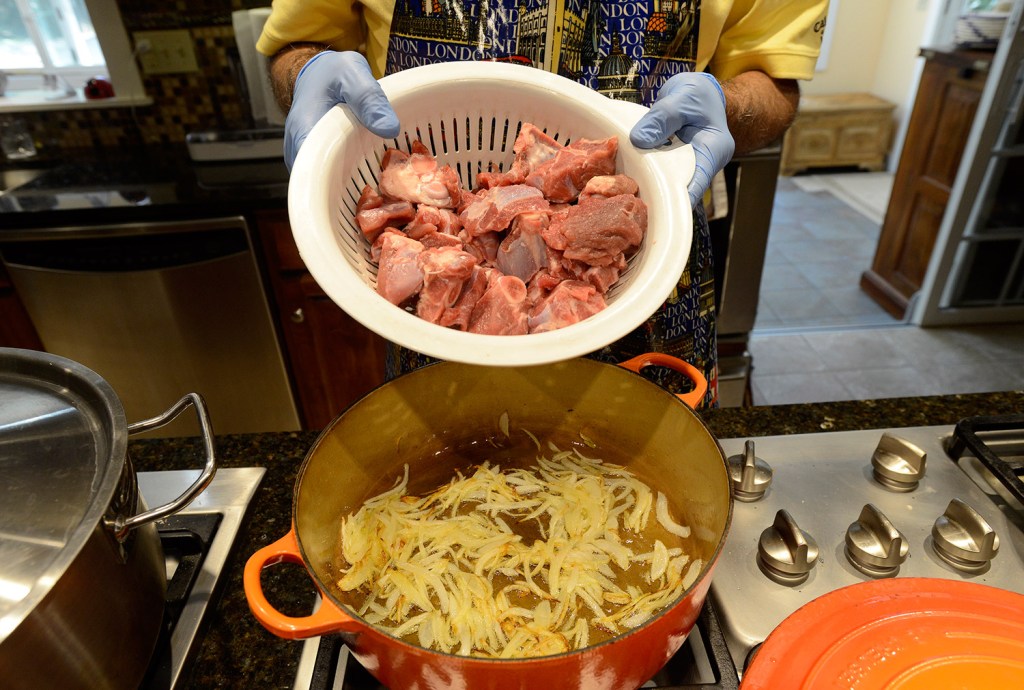NEWCASTLE — Dr. Rifat Zaidi still remembers watching his mother go to the market to buy barley so she could make a big pot of haleem to mark the beginning of the Islamic year.
For 10 days before she planned to serve the soup, day in and day out, she sat with a mortar and pestle and ground the husks off the barley by hand. When Zaidi and his siblings came home from school, she’d let them have a go at it, until their efforts didn’t quite meet her exacting standards.
“She’d say ‘Go away. You’re destroying my barley,’ ” Zaidi recalled with amusement.
Haleem is a favorite Pakistani dish traditionally made during Muharram, the first month of the Islamic calendar, but it’s also a favored meal in the Zaidi household during Ramadan, the annual month of fasting observed by Muslims around the world. Fewer than 1 percent of Maine adults are Muslim, according to a 2014 survey by the Pew Research Center for Religion and Public Life, which translates to roughly 10,000 people. This year Ramadan began at sunset June 17 and continues until July 17.
During Ramadan, for 19 hours a day, Zaidi explained, Muslims may not eat food or even drink water. In the evenings, families come together for iftar, the breaking of the fast at sunset.
“The idea of fasting is to control your urges,” Zaidi said, but after 19 hours without food, the tendency is to cook many dishes and binge in the evenings, he continued. On top of that, many of the favorite foods for breaking the fast, such as pakoras, are fried. As a result, a lot of people actually gain weight during Ramadan, he said.
Zaidi, 55, is an orthopedic surgeon at Miles Memorial Hospital in Damariscotta. As physicians, he and his wife, Tasneem (she doesn’t practice medicine anymore) know this dietary roller coaster is not good for their bodies. So they decided to lighten up their meals. Instead of making 10 different dishes every night like many Pakistani families do, they would make one nutritious dish – and often it’s some kind of soup.
“We said we are going to have soup for our break fast, our iftar, because it has all the good things,” he said. “There’s a little bit of protein and a lot of vegetables.”
Zaidi has chosen health over family tradition – he is the only one in his family who cooks this way during Ramadan. But his children, who lived in Pakistan the first few years of their lives, have been exposed to his family’s Ramadan traditions.
With busy schedules and a culture that isn’t geared toward recognizing Ramadan (in Pakistan, Zaidi said, offices close early so people can go home and pray or cook), the family usually relies on a ready-made version of haleem. But Zaidi agreed to show us how to make the dish from scratch.
Two types of barley simmered on the stove and goat bones bubbled in water to make a broth as Zaidi, wearing a pair of his surgical gloves to cook in, explained the history of haleem, “a very historic dish.”
On Oct. 10, 680 A.D., there was a battle between two Muslim sects, the Sunni and the Shia, in which the grandson of the Prophet Muhammad and most of his family were massacred.
“The ones who were persecuted had no food, so what they did was they gathered everything – all the dry rations they had, some meat – and they threw that in the pot,” Zaidi said.
The battle is commemorated every year on Oct. 10 of the lunar calendar, and many families make haleem at that time.
“These days you can eat anything at any time,” Zaidi said, “but this was cooked once a year because it was so labor intensive.”
As he chopped onion and garlic, grated ginger and added spices to the goat broth, Zaidi worked from memory, tossing a handful of coriander here, a generous pinch of brown mustard seed there. Asked how much water he put into one of the large pots simmering on the stovetop, he replied, “Just enough.”
“The only thing I measure is salt because you don’t want to overdo it,” he said.
During Ramadan he is allowed to taste the food he’s preparing, but is not supposed to swallow.
“We make all sorts of things for Ramadan,” he said. “The most popular things are the fritters, the pakoras. They’re unhealthy … but they taste awesome.”
COMPELLED TO LEARN TO COOK
Zaidi’s love of cooking stems from the days of his medical training in England, where the food was “really horrible.” Zaidi practically lived at the hospital, working extra shifts. He can’t eat pork, and he’s allergic to seafood. But in England, he said, tuna would show up in vegetarian meals, and bacon bits were sprinkled on every salad.
“I couldn’t cook when I went to England,” he said. “What happened was, as I trained as a surgeon, I realized that if I were to survive, I had to cook. Initially everything used to taste the same.
“The first time I went home to Pakistan, I was asking my mother all these questions I had, and my father was sitting there and he said ‘Well, you haven’t actually talked about being a doctor. The only questions you’ve discussed are cooking.’ ”
Today the doctor definitely knows his away around a spice rack. He’s even working on a cookbook and has gathered together many of his mother’s recipes to include in it. He and Tasneem, married 23 years, like to make paellas, barbecue meats and keerai, a kind of stir fry. They like goat meat because it is lean, but only certain types of goat.
“This is Berber goat,” Zaidi said as he added the meat to a pot of browned onions. “The thing to know about goat is the goats that have a lot of hair, their meat doesn’t taste as good.”
In Pakistan, he said, each family has an aunt who claims to be the best haleem maker in the family.
“Everybody grows up with a slight variation of haleem,” Zaidi said. “They think that’s the original one. If you go to the northern part of Pakistan, they’ll make it slightly different. If you go to the southern part of Pakistan or India, they’ll make it different. In Pakistan, it is traditionally made with beef.”
HELPING HIS HOMELAND
Zaidi worked in Pakistan for a time before moving his young family to the United States, but he returns regularly to visit family and do charity work. When an earthquake in 2005 left millions of people homeless, he visited three times, bringing with him $60,000 in relief funds raised here in the states, as well as physicians and nurses from Miles Memorial.
When major flooding hit in 2010, he said, “we collected money to build a village of 320 homes, and two schools for girls – for girls only, and we are still running those – and a couple of mosques.”
Zaidi’s haleem is usually nearly an all-day dish, but he managed to speed up the process and had it ready in about three hours. It made a huge pot, but it’s one of those dishes that gets better as it ages and the spices blend.
Then the family sat down to eat together – Rifat and Tasneem, their son Sammy, their daughter Izzy, and Rahaan Ansari, a medical student from the other Newcastle – in England – who is living with the family while he trains in orthopedic surgery at Miles Memorial Hospital. It was Ansari’s idea to make the haleem, one of his favorite dishes, and he was already looking forward to leftovers.
“I’m excited to eat this haleem again tomorrow,” he said.
HALEEM
Goat meat can be found at local halal markets. Zaidi prefers Berber goat, which he buys in Boston. If you prefer, you can substitute vegetable broth or chicken stock for the goat broth.
You need to soak the barley and legumes overnight, so plan accordingly. Also, the recipe calls for two types of cardamom pods, two types of barley and three types of lentils, so shop accordingly. You may want to enlist someone to do the dishes for you! Zaidi says this dish improves with age.
Serves 10-12, with plenty of leftovers
FOR THE STEW:
1 cup hulled barley
1 cup pearl barley
1 cup yellow split peas
½ cup red lentils (masoor dal)
½ cup yellow lentils (moong dal)
1 cup white lentils (urad dal)
½ cup olive oil
1½ onions, chopped
1 teaspoon salt
1 teaspoon red chile pepper
1 teaspoon paprika
1 teaspoon turmeric
1 teaspoon pepper
2 large serving spoons Greek yogurt
1 garlic clove
1 teaspoon grated ginger root
2 pounds goat meat
FOR THE BROTH:
Goat bones
1 tablespoon coriander seeds
1 teaspoon grated ginger root
3 or 4 cloves garlic
4 green cardamom pods
2 black cardamom pods
Generous pinch brown mustard seed
2-3 broken pieces cinnamon stick
1 tablespoon fennel seeds
3 dried chili peppers
2 teaspoons cumin seeds
2 teaspoons salt
½ teaspoon dried thyme
FOR THE GARNISH:
Cilantro
Mint
Lemon slices
Ginger
Tomato
Onion pieces, fried in oil until crispy and dried on a kitchen towel
Masala
Soak the two barleys, split peas and lentils separately in water overnight. The next day, fill a large pot with water, enough to cover the barleys by 2 inches. Bring to a boil, then lower heat and simmer until the mixture thickens, about 45 to 60 minutes. Add the drained split peas and the lentils and continue to simmer for about an hour.
Meanwhile, to make the broth, add goat bones to 4 quarts of water, bring to a boil, then lower heat to a moderate simmer. Add the coriander, ginger, garlic, the cardamom pods, mustard seeds, cinnamon, fennel, chili peppers, cumin, salt and thyme. Continue to simmer.
Returning to the stew, heat a 3- to 4-quart, heavy-bottomed pot and add the olive oil. Add the chopped onions and fry until golden brown. Add the salt, red chile pepper, paprika, turmeric and pepper to the pot and stir. Add a little water if necessary to keep the onions from burning, but not enough to bring the temperature down. (That, Zaidi says, is the key to making a good curry.) Stir in the yogurt.
Crush a garlic clove and add to the goat meat, along with the grated ginger.
Add the goat meat to the spiced onions in the heavy-bottomed pan and stir frequently, continuing to sprinkle water in the pot. Cook the meat for 15 to 20 minutes.
Pour the goat broth through a colander into a bowl to separate out the spices and bones and add the strained broth, along with the goat meat mixture to the pot of grains. Bring to a boil, then reduce heat and simmer – stirring constantly – until the haleem thickens and sticks to the spoon. Total cooking time should be about 4 hours. The stew can also be transferred to a slow cooker to cook overnight on low heat.
While the haleem is cooking, prepare a platter of garnishes for the table. Serve the haleem in bowls, and allow each diner to top his or her portion with a little of each garnish.
Send questions/comments to the editors.








